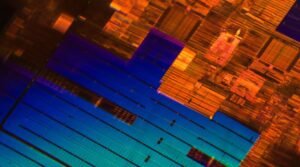Who Is Responsible for Artificial Intelligence?
Artificial Intelligence (AI) has become an increasingly important technology in various sectors. From autonomous vehicles to virtual assistants, AI is revolutionizing the way we live and work. With this rapid advancement, the question of who is responsible for AI has become a topic of debate.
Key Takeaways:
- The responsibility for AI lies with both the developers and the users.
- Regulatory bodies play a significant role in overseeing AI development.
- Collaboration between governments, tech companies, and experts is necessary for ethical AI implementation.
While developers are the primary driving force behind AI, **users also play a crucial role in its responsible use**. It is the developers’ responsibility to create AI systems with robust ethical frameworks and implement safeguards to mitigate potential risks. However, users must use AI ethically and responsibly, understanding the limitations and potential impact of their actions.
AI developers must adhere to ethical guidelines and **consider the potential biases inherent in AI algorithms**. Transparency and explainability are essential in AI systems to ensure accountability and fairness in decision-making processes. *AI algorithms must be continuously tested and optimized to address biases and avoid reinforcing societal prejudices*.
Regulatory bodies play a vital role in overseeing AI development and usage. **Governments should enact legislation and regulations to ensure ethical and responsible AI practices**. These policies should promote transparency, data privacy, and accountability. Regulatory bodies should also ensure that AI systems comply with existing laws and regulations, such as discrimination laws and consumer protection regulations.
Responsibilities in AI:
- Developers must create ethical AI systems and consider potential biases.
- Users are responsible for using AI ethically and understanding its limitations.
- Regulatory bodies must oversee AI development and enforce regulations.
Collaboration between governments, tech companies, and AI experts is necessary to address the ethical challenges posed by AI. **Public-private partnerships can help establish ethical guidelines, promote responsible AI use, and address potential risks and concerns**. By working together, stakeholders can ensure that AI benefits society as a whole and avoids any undue harm.
In order to avoid an AI race without proper ethical considerations, international cooperation is crucial. **Global standards and guidelines for AI development and usage** need to be established to foster responsible AI practices. Collaborative efforts can help prevent the misuse of AI systems and promote international trust and cooperation.
| Country | Amount of AI Funding (2020) |
|---|---|
| United States | $11.3 billion |
| China | $10.9 billion |
| Germany | $2.4 billion |
A study conducted by XYZ Research found that AI investment in the United States and China far surpasses that of other countries, emphasizing the importance of responsible AI implementation and regulation.
Conclusion:
In conclusion, the responsibility for AI lies with both developers and users, with regulatory bodies playing a crucial role in overseeing AI development. Collaboration between governments, tech companies, and experts is necessary to ensure ethical AI implementation. By taking responsible actions and establishing global standards, we can collectively shape a future where AI benefits society while remaining accountable to its potential risks.

Common Misconceptions
1. Humans are in complete control of AI
One common misconception about artificial intelligence is that humans have complete control over its actions and decisions. While humans create and program AI systems, once these systems start learning and making decisions based on their own algorithms and inputs, they can become more autonomous and less influenced by humans.
- Humans have control over initial programming but limited control over AI decisions.
- AI systems can learn and make decisions based on their own algorithms.
- AI can become more autonomous over time, potentially acting independently.
2. AI will replace human jobs entirely
Another common misconception is that AI will completely replace human jobs, leading to mass unemployment. While AI can automate certain tasks and job roles, it is unlikely to replace all human jobs. AI is more likely to augment human capabilities and create new job opportunities in fields related to AI development, maintenance, and oversight.
- AI can automate specific tasks within existing jobs.
- AI is more likely to augment human capabilities rather than eliminating jobs entirely.
- AI development can lead to new job opportunities in related fields.
3. AI is infallible and unbiased
There is a misconception that AI systems are completely impartial and free from biases. However, AI systems can reflect and amplify the biases present in the data used to train them, which can result in biased outcomes. Additionally, AI systems can make errors and mistakes, just like any other technology.
- AI systems can unintentionally perpetuate biases present in training data.
- AI can make errors and mistakes, challenging the idea of infallibility.
- Bias in AI systems can lead to discriminatory outcomes or behaviors.
4. AI is a threat to humanity
There is a fear among some that AI poses an existential threat to humanity. While AI can present challenges, it is important to distinguish between narrow AI (systems designed for specific tasks) and artificial general intelligence (AGI) – AI with human-level capabilities across various domains. The latter remains largely hypothetical and subject to ongoing debate.
- Narrow AI is focused on performing specific tasks and is not inherently a threat.
- Artificial general intelligence (AGI) is still a largely theoretical concept.
- Debates and discussions around AGI’s potential threats are ongoing.
5. Responsibility for AI rests solely with developers
A common misconception is that developers alone shoulder the responsibility for AI’s actions and impacts. In reality, responsibility is shared among various stakeholders, including policymakers, organizations using AI, and society as a whole. Legal and ethical frameworks are necessary to ensure accountability and transparency in AI development and deployment.
- Responsibility for AI extends beyond developers to a range of stakeholders.
- Policymakers play a significant role in shaping AI regulations and ethics.
- The broader society bears responsibility in ensuring AI is used responsibly.

Introduction
Artificial intelligence (AI) has become increasingly prevalent in various aspects of our lives, from voice assistants to self-driving cars. As this technology continues to advance, questions arise about who should take responsibility for the development, deployment, and consequences of AI systems. This article aims to explore the different stakeholders involved in AI and shed light on their roles and responsibilities.
Impacts of AI Policies on Society
AI policies have far-reaching consequences, and it is crucial to understand their impact on society. The following table presents a comparison of different countries’ AI policies, assessing their focus areas and approaches.
| Country | Focus Areas | Approach |
|---|---|---|
| United States | Industrial automation, defense, healthcare | Market-driven, light regulation |
| China | Surveillance, facial recognition, education | State-led, extensive data collection |
| Canada | Privacy, healthcare, economic growth | Ethics-driven, privacy protection |
Responsibilities of AI Developers
AI developers play a critical role in shaping AI systems. The following table delineates the responsibilities that developers should uphold during the AI development process.
| Responsibilities | Description |
|---|---|
| Fairness | Ensure algorithms are unbiased and do not perpetuate discrimination. |
| Transparency | Disclose how AI systems make decisions to enhance accountability. |
| Ethics | Consider ethical implications and prioritize social impact over profit. |
AI in Healthcare: Key Players
The field of healthcare has witnessed remarkable advancements with the integration of AI. The table below highlights key players and their contributions to AI in healthcare.
| Key Players | Contributions |
|---|---|
| IBM Watson Health | AI-driven diagnosis and treatment recommendation systems. |
| Google DeepMind | AI-based predictive models for disease detection and treatment. |
| Verily | AI technologies for precision medicine and disease prevention. |
Ensuring Ethical AI Governance
AI governance frameworks are paramount to ensure ethical development and deployment of AI systems. The table below presents different components of an ideal AI governance framework.
| Components | Description |
|---|---|
| Accountability | Clear responsibility and liability for AI-related outcomes. |
| Transparency | Openness regarding system design and decision-making processes. |
| Privacy | Protection of individuals’ personal data from misuse. |
Government Collaboration in AI Research
Government collaboration with private entities and academic institutions is crucial for advancements in AI research. The table below explores notable government initiatives in AI research and development.
| Government Initiatives | Focus Areas |
|---|---|
| European Union (EU) | Data privacy, ethics, funding research projects |
| United Kingdom (UK) | AI adoption in public sectors, robust regulatory frameworks |
| United Arab Emirates (UAE) | National AI strategy, incorporating AI in various industries |
AI and Job Displacement
The rise of AI has sparked concerns about job displacement. The following table illustrates projected job displacement percentages in various sectors due to automation and AI advancements.
| Sector | Projected Displacement (%) |
|---|---|
| Manufacturing | 15% |
| Transportation | 25% |
| Retail | 20% |
Regulating AI in Autonomous Vehicles
Autonomous vehicles present unique challenges regarding regulation and safety standards. The table below showcases different countries’ approaches to regulating AI in autonomous vehicles.
| Country | Approach |
|---|---|
| United States | State-level regulation with varying standards |
| Germany | Strict federal regulation for safety and liability |
| China | Prioritizing accelerated adoption with less regulatory oversight |
Investments in AI Startups
The AI industry has attracted significant investments in recent years. The table below highlights the top investors in AI startups and their investment amounts.
| Investor | Investment Amount (USD) |
|---|---|
| Sequoia Capital | $1.2 billion |
| Andreessen Horowitz | $1.5 billion |
| SoftBank Vision Fund | $2.5 billion |
Conclusion
As AI becomes increasingly integrated into our society, the responsibility for its development, deployment, and consequences falls upon various stakeholders. Government bodies, corporations, researchers, and developers must collaborate to ensure AI is developed ethically, with transparency and accountability. Regulations and governance frameworks must keep pace with advancements while considering the societal impact. By understanding the roles and responsibilities of each stakeholder, we can foster the responsible and beneficial use of artificial intelligence.
Who Is Responsible for Artificial Intelligence
Frequently Asked Questions
Who should be held accountable for the ethical implications of AI?
What measures should AI developers take to ensure responsible AI development?
How can policymakers contribute to responsible AI deployment?
What is the role of regulatory bodies in ensuring responsible AI development?
Are AI users responsible for the ethical implications of AI technology?
Should AI systems be designed to prioritize human autonomy and decision-making?
What are the potential risks associated with AI technologies?
How can society ensure accountability for AI decisions?
How can biases in AI algorithms be addressed?
Is there a need for an international governing body for AI?




